A less-common milkweed
On September 7th, while walking across a field bordering Grand Avenue Parkway in Pflugerville on my way to photograph a few Maximilian sunflowers, one of which you saw last time, I spotted a milkweed that I come across only occasionally, Asclepias oenotheroides. It has appeared in these pages just once before, and I refer you to that earlier post for a closer look at a more advanced stage in the milkweed’s development and to find out more about one of its common names, hierba de zizotes.
© 2016 Steven Schwartzman

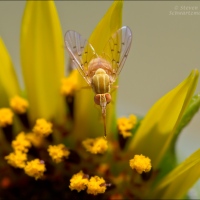
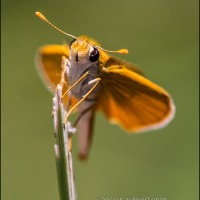
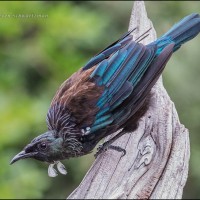
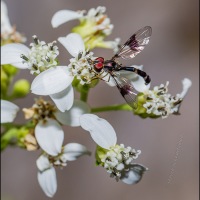
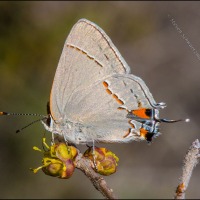
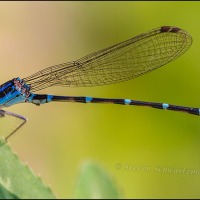
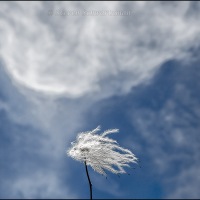
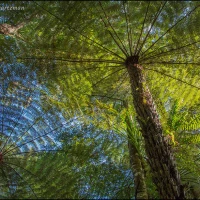

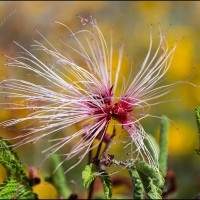
Now that I can identify five, and maybe six, milkweed varieties, I’m struck by how unlike this one is to those I know. There are similarities, but the first plant I thought of actually was frostweed. I even see a certain similarity between the buds.
I was curious about the specific epithet. The word reminded me of the genus Oenothera. Lo and behold, Shinners & Mahler’s notes that oenotheroides means “resembling… evening primrose.” I couldn’t understand it, until I looked at photos of flowers in that genus, and discovered that not all primroses look like those pretty pink primroses that overspread our fields and highway medians in the spring.
shoreacres
September 17, 2016 at 6:59 AM
You’ve read my mind. I thought about explaining the meaning of oenotheroides but didn’t because I didn’t know which feature(s) of the plants in the genus Oenothera someone saw in this milkweed.
The vernacular name “side-cluster milkweed” highlights the fact that the flowers form on all sides of the central stalk, as opposed to forming a globe, as in some other common milkweed species here. I’ve never heard anyone use the name “side-cluster milkweed” but then I’m not sure I’ve ever heard anyone say hierba de zizotes, either.
In photographs there’s a certain abstract similarity to frostweed’s flowers, but if you saw the actual plants I don’t think you’d find either one suggesting the other.
Steve Schwartzman
September 17, 2016 at 8:29 AM
I was out at Armand Bayou today, and blooming frostweed was abundant. You’re right that, as seen in real life, the plant doesn’t resemble the milkweed at all. I think it’s the macro view that suggested it to me. The tubular parts of these flowers suggested what I take to be the pollen tubes of the frostweed.
shoreacres
September 17, 2016 at 5:51 PM
I’m glad to hear that there’s an abundance of frostweed blooming near you. That gives you a chance to make note of where the plants are so you can head over there early in the morning after the first freeze in the winter.
I understand how the tubular parts of the milkweed suggested the pollen tubes of the frostweed to you.
Steve Schwartzman
September 17, 2016 at 9:44 PM
If we have a freeze, of course. Last year, we didn’t even get close!
shoreacres
September 17, 2016 at 9:46 PM
Yeah, I’d thought abut adding “if you get a freeze” but I decided to be optimistic and leave that out.
Steve Schwartzman
September 17, 2016 at 9:49 PM
This is a very nice portrait, and a handsome milkweed. Don’t you love that there are so many kinds of milkweed? Delightful.
melissabluefineart
September 17, 2016 at 8:36 AM
I appreciate your appreciating this portrait, Melissa. I do like the diversity of milkweeds. Botanists have attested seven species of Asclepias in Travis County (where I am), and members of other genera in the milkweed sub-family grow here as well. One that gets people’s attention is the pearl milkweed vine:
https://portraitsofwildflowers.wordpress.com/2014/12/25/big-things-come-in-small-packages-a-holiday-pearl/
Steve Schwartzman
September 17, 2016 at 9:01 AM
Oh, yes, I like that one too 🙂
melissabluefineart
September 18, 2016 at 7:56 AM
How could you not, right?
Steve Schwartzman
September 18, 2016 at 9:37 AM
Thanks for the introduction to a new variety of milkweed. I have the two native varieties, and have not seen the one that you show.
lensandpensbysally
September 17, 2016 at 11:56 AM
You’re welcome for the introduction to this species. Your mention of “the two” native milkweeds sent me to the map at
http://bonap.net/NAPA/TaxonMaps/Genus/County/Asclepias
and I was surprised to confirm how few Asclepias species grow natively in Delaware. In my county in central Texas there are seven native Asclepias species, plus more milkweeds in other genera.
Steve Schwartzman
September 17, 2016 at 12:12 PM